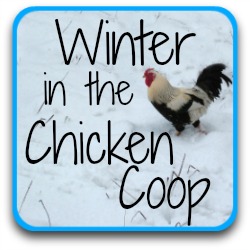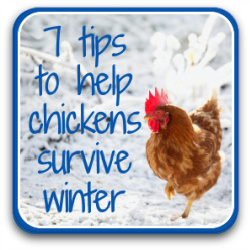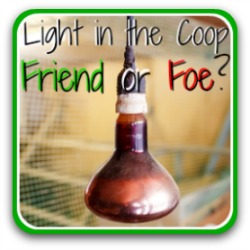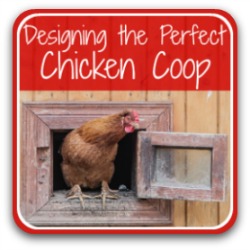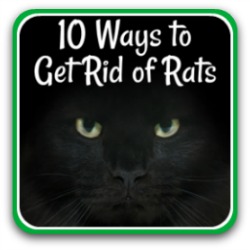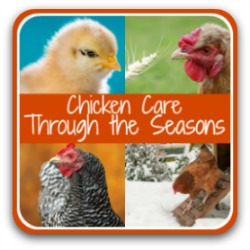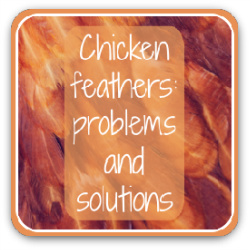- Home
- Winter care
- Frostbite
Frostbite is a painful health hazard for backyard chickens.
In this article we'll look at the symptoms, and how to spot, treat and prevent it in your flock.
Did you know that chickens can get frostbite? Would you know the tell-tale signs in your chickens? And if they already have it, what can you do to treat it?
Generally speaking, many chicken breeds can deal with even extremes of cold pretty well. After all, they have a feather quilt already attached.
But when winter starts drawing in and the weather gets not just cold but wet and snowy, the one thing your chickens can be susceptible to is frostbite.
It's painful and, once it's affected your flock, it's not curable.
So if your chickens will be outside this winter and the weather is likely to be very cold – and more importantly, damp – it's important to know how to prevent frostbite happening, and how to treat it if it does.
This is a long and detailed article based on reliable sources.
If you're looking for a particular piece of information, use these links:
What causes frostbite in chickens?
Obviously, low temperatures are the culprit - but they're not the only culprit, nor the main one.
Chickens generally can cope well with the cold. It's only when other things come into play that frostbite is likely to happen.
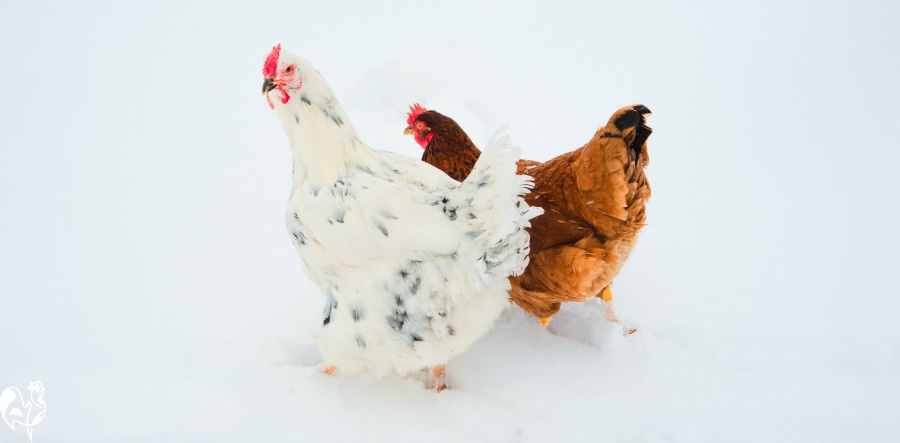 Chickens can cope pretty well with snow!
Chickens can cope pretty well with snow!Those things are :
- Humidity : The most common reason for frostbite in backyard chickens is freezing air mixed with moisture. It's actually the moisture which causes the problems, not the cold itself.
- You may not realise it, but heating the coop can cause moisture to form and actually make the problem worse. I deal with whether heating your coop is a good idea here.
- How to tell if you have a problem? Look for any condensation in the coop, particularly on the windows. If you see droplets of water like this, you need to take action.
 Condensation on coop windows is a sign of high humidity, and a potential source of frostbite.
Condensation on coop windows is a sign of high humidity, and a potential source of frostbite.- Dripping water is also a problem. When chickens drink, they dunk their beaks and then - you've probably seen this - throw their head back and let the water flow down their throat. If they dribble onto wattles, ice will form and the wattles will potentially be frostbitten.
- Not being able to fluff up is an issue, too. Chickens maintain heat in their bodies by fluffing up their feathers, and huddling together to keep warm. This is especially important for their feet - they need to be able to cover them at night, providing a ready-made feather duvet.
- Which is why, although you may think it looks cute, dressing up chickens in winter woollies is not just a bad idea - it can kill them. Don't do it. The only exception is ex-battery hens who have very few feathers.
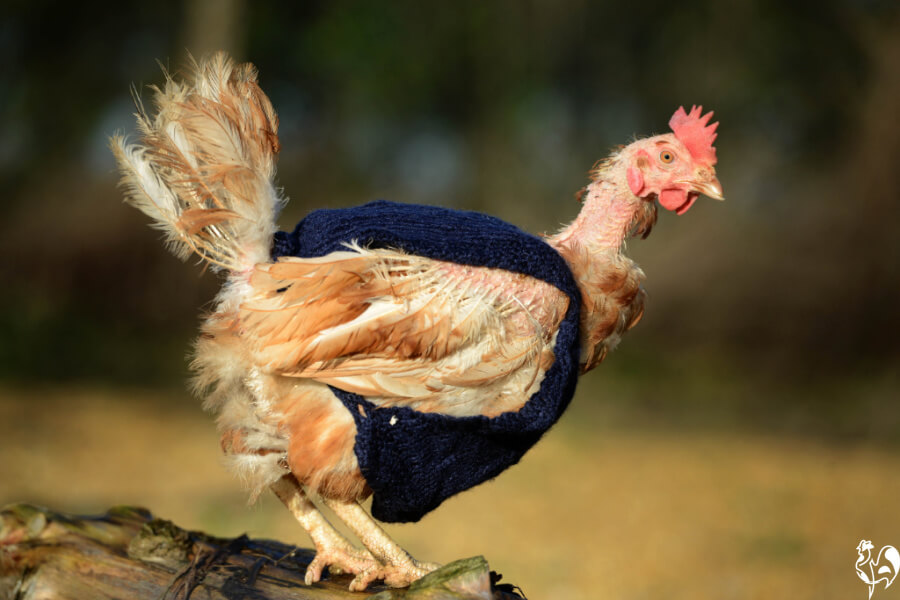 Ex-batts may need an extra source of warmth, but otherwise backyard chickens don't need winter woollies!
Ex-batts may need an extra source of warmth, but otherwise backyard chickens don't need winter woollies!Does frostbite affect all chickens?
It can do. It's more common in breeds with large, single combs like the Light Sussex, because they're much more exposed. Chickens with pea, rose or walnut combs tend to do better, because the comb is flatter to the head.
Take a look at this Silkie, for example. Its walnut comb is far more protected than the Barred Rock's single comb you can see here.
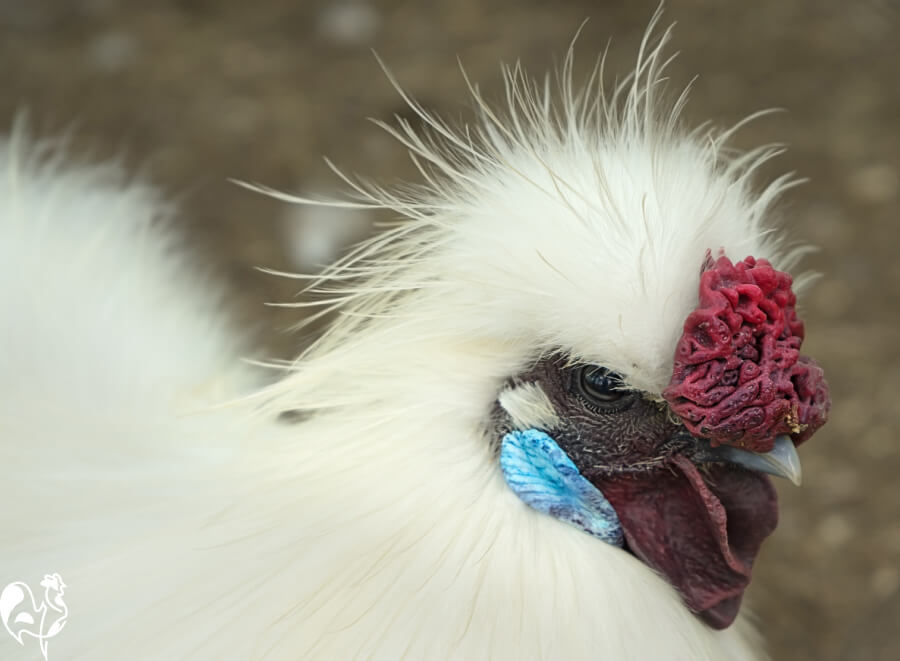
But even cold-hardy breeds can suffer from frostbite if the temperatures plummet enough and other factors, particularly moisture, come into play.
How to spot frostbite in your backyard flock.
This is fairly straightforward. The parts of the bird that are most susceptible to frostbite are the parts that are most exposed and least well protected with feathers: the comb, the wattles (especially on roosters) and, less frequently, the feet.
What happens physically is that blood which usually goes to those external parts is sent instead to the chicken's body, to keep vital organs warm. So the extremities have less blood to keep them warm and are more likely to be affected.
It's like when you go out into the cold - your hands, feet and nose are usually the first to feel it.
When frostbite first starts to take hold, it's not always obvious. And just as you might see your hands becoming paler than usual when they're really cold, so a chicken's comb will also begin to look pale.
Here's an example. See how there's a ring of pale tissue at the base of the tips? The tips themselves are starting to darken, and there's some swelling in the comb itself.
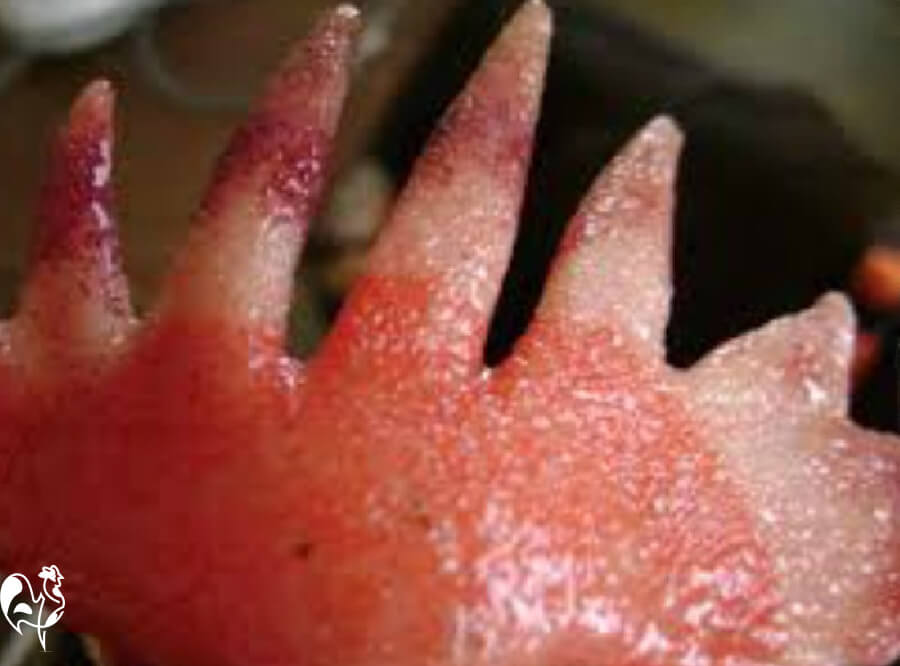 Photo courtesy of Backyard Chickens.com
Photo courtesy of Backyard Chickens.comIf it's not checked at this early stage, it then develops. That's when it's more usually spotted, because it becomes very obvious.
The easiest way to spot it once it's happened is to look at the combs and wattles of your flock.
If the tips have turned grey or black, it's a sure sign of frostbite. If you touch the comb, it will feel quite brittle - as though it's going to break off in your hand.
This picture shows a very typical frostbitten comb. Note, only the very tips of the comb are affected.
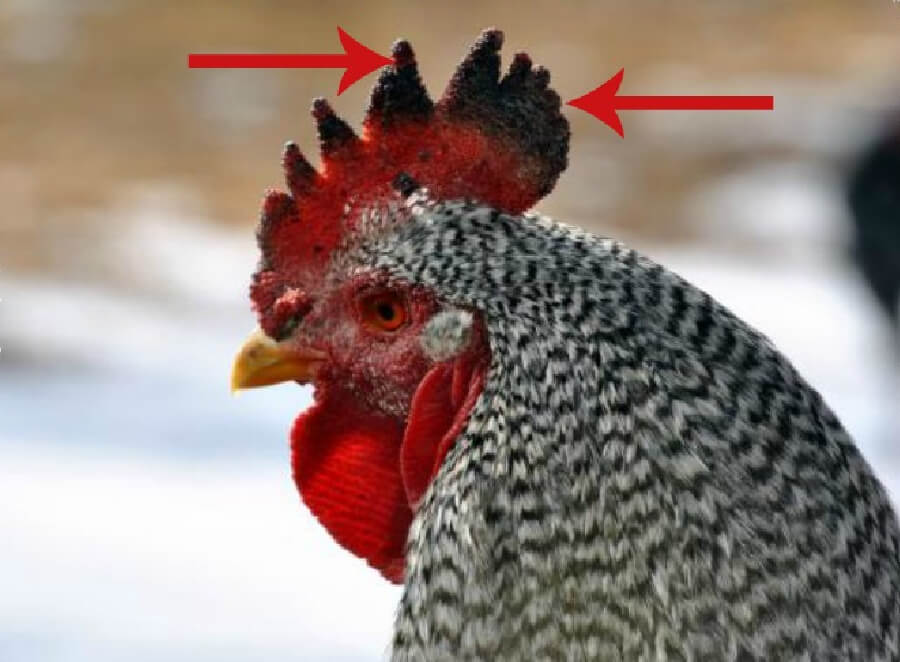 Photo courtesy of Backyard Chickens.com
Photo courtesy of Backyard Chickens.comFrostbitten feet?
I've never seen frostbitten feet in my own flock, even though we get very low temperatures and a lot of snow in Italy - and even though my flock seem to quite enjoy standing around in it!
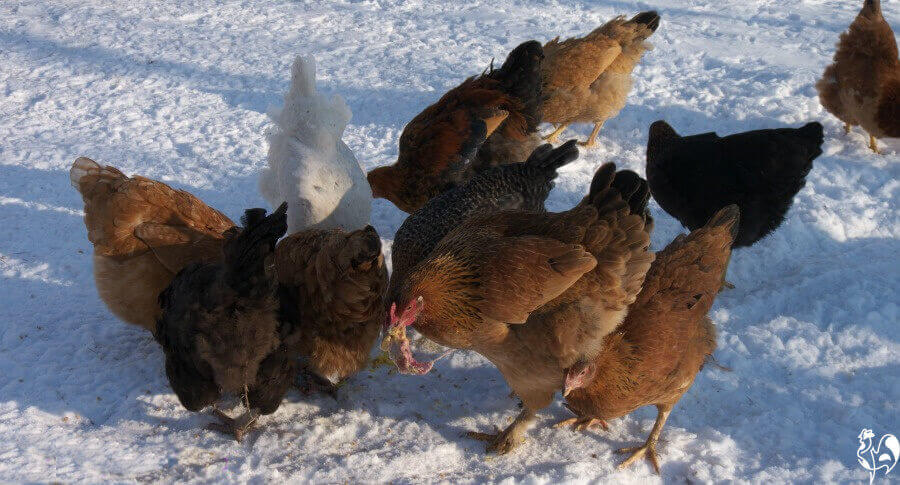
Watch out for limping when temperatures drop - it's an obvious sign of frostbitten feet. If you examine them you may see a light-coloured blisters on the feet (don't be tempted to pop them - you risk inviting infection!) and the pads will feel much harder than usual.
Look, too, for general signs of unease such as the flock eating less than usual, and hens not laying eggs - although of course, they do slow down in the winter months anyway.
It's taking these symptoms together which will tell you there's an issue with frostbite in your backyard flock. Making sure your roosts are the right size will help with frostbitten toes.
How to treat frostbite in your chickens.
If you do spot a frostbitten chicken, don't panic - it's not the end of the world. A case of frostbite has to be pretty bad before a chicken will succumb and not recover.
But it does need dealing with as soon as you find it.
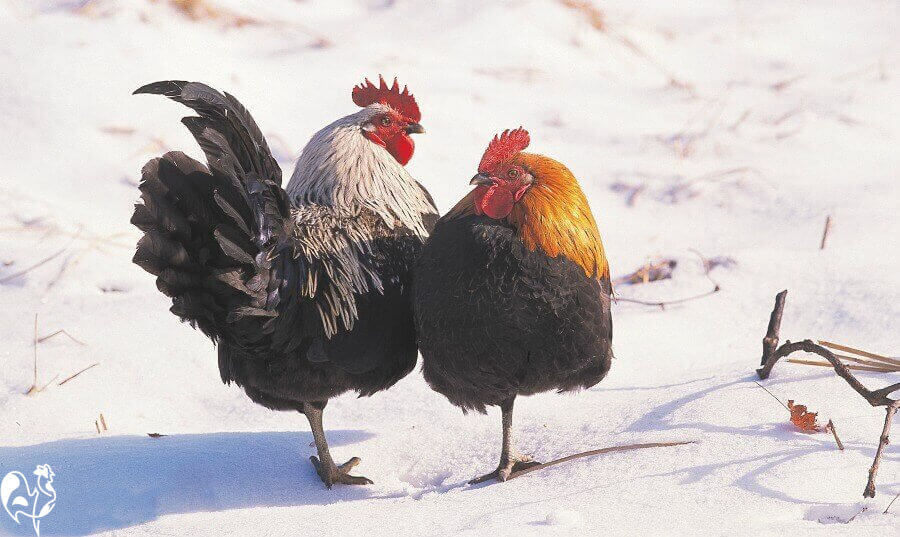 Standing on one leg is normal for chickens in snow, but watch carefully for any signs of limping.
Standing on one leg is normal for chickens in snow, but watch carefully for any signs of limping.
What not to do.
- Don't, under any circumstances, try to cut off affected tissue. You run the risk of injuring the chicken and creating a wound where infection may take hold. And infection is far more likely to kill your hens than the cold.
- Don't try to rub or break off the blackened bits of comb, or burst foot blisters, for the same reasons.
- Don't take your chickens inside and plonk them against a radiator or run their feet under a hot tap (yes, I do know someone who did). The extremes of temperature will shock their system - and shock is also more likely to kill than cold.
Now, what's best to do.
Links in this section are "affiliate links", which means that if you click and buy something, I earn a small commission at no extra cost to you.
- Be careful of a chicken with a damaged comb: you may find that others try to peck it. Chickens are curious, and have a bad habit of picking on someone who's a bit under the weather.
- If you can, move those flock members into an isolation spot where they can't be pecked at by others. I use a dog crate, which I leave in the coop so the isolated bird(s) can still be part of the community.
- For more information about how to isolate chickens, and how to re-introduce them to the flock, see this page.
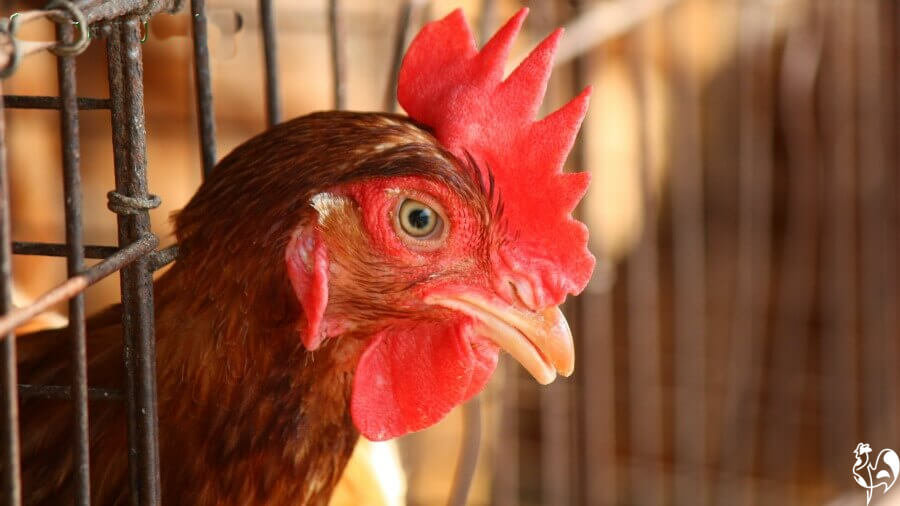 A dog crate keeps a chicken in sight and sound of the flock but physically separated.
A dog crate keeps a chicken in sight and sound of the flock but physically separated.- Warm the chicken gradually. It's really important you don't rush this. Dry, warm bedding will help; in extreme circumstances, if a bird feels really cold, take them inside and wrap in a warm, dry towel.
- For frostbitten feet, a warm (not hot) foot bath can help. A softer bedding material may also help protect sore feet. If you can spare a fluffy towel, your chicken will appreciate it!
- Tissue damaged by frostbite is dead and will eventually drop off, leaving healthy tissue behind. This can be distressing to see, but it's normal - don't worry about it. It just means your chicken's comb will be a little less pointy than before!
- However, when it does happen, it's ultra-important to keep the area free from infection. Frostbite is unlikely to kill your chickens, but infection can take hold very, very quickly.
- If you want a natural antiseptic, lavender oil is proven to have strong anti-bacterial properties. Find out more about it by clicking across to my article here.
- I also always keep a stock of Vetericyn available. It's an antiseptic spray, and it's the best I've ever used - it's like a miracle cure. It's not cheap, but it's highly effective.
- It's a good idea, too, to make sure that your affected chickens are kept well hydrated. Offer water in a container that won't spill (water dropped onto cold wattles will make the problem worse).
- Adding electrolytes will help a struggling chicken. It's easy to make your own from items you're likely to have in your kitchen cupboard. Here's a free recipe for my home made electrolyte drink.
- Alternatively, keep some store-bought packs in. Your local feed store should stock them, or you can buy relatively inexpensively online.
- If you don't have any of those (again, try to keep some in stock) a diluted sports drink such as Gatorade can be effective.
How to prevent frostbite.
As we now know the causes of frostbite, ways to prevent it are pretty obvious.
- Buy breeds which are less susceptible. Take a look around your local area at well-established flocks. People who have kept chickens for some time know which do best in local conditions.
- As a rule of thumb, breeds with a small comb and heavy body do best in cold weather. Wyandottes are a good example and also tend to keep laying well in the winter. Other possible breeds are Jersey Giants, the Chantecler (a Canadian breed, used to minus temperatures), Ameraucana, and the lovely Speckled Sussex.
- Bantams tend not to do as well with the cold - they need more body heat.
- Silkies' combs, as we've seen, are good in frost but Silkies are not good in cold, wet conditions. Their feathering absorbs, rather than repels, water and they can become chilled quickly. If you have Silkies make sure they have shelter on snowy days.
- Breeds with feathered feet do well in terms of keeping feet protected, but are not good in muddy runs or wet conditions. If it's cold but dry, a breed like the Brahma is a good choice.
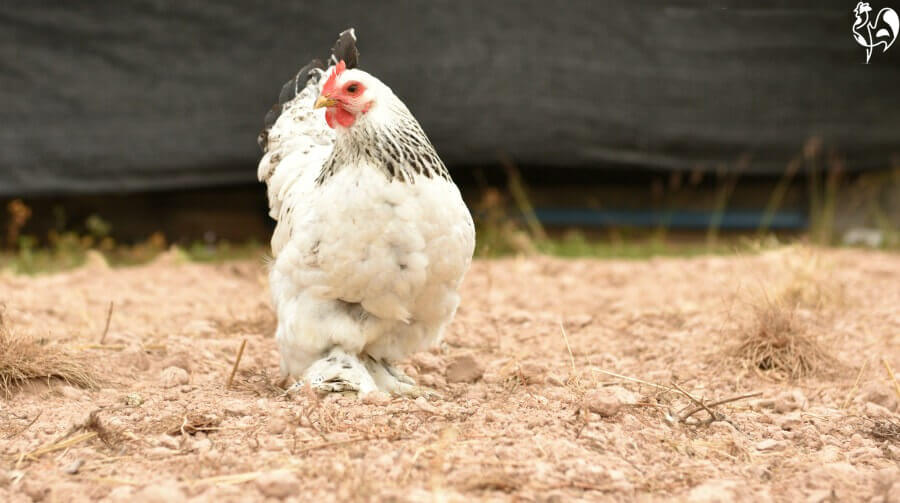 The Brahma chicken breed: good in cold, dry conditions.
The Brahma chicken breed: good in cold, dry conditions.- If you have large combed birds and you're expecting a cold snap, try smudging some grease on the comb. Many people use Vaseline; I tend to use coconut oil because it's more natural - and smells delicious!
- I've used this on my large-combed birds and I've not had to deal with a case of frostbite since. There's no proven evidence that it absolutely does prevent frostbite, but it may help - and it can't do any harm.
- Make your roosts wide. It gives the flock a better chance of hunkering down and covering their feet with the warmth of their feathers.
- Above all, make sure your coop is well ventilated and free from moisture. There should be a good flow of air, preferably with vent holes well above roosting height, but no draughts at or below the level of the roost.
- Droppings and warm chicken breath add to overnight moisture levels, making it more likely that droplets will settle on the comb and wattles. The moisture then freezes - and frostbite is inevitable.
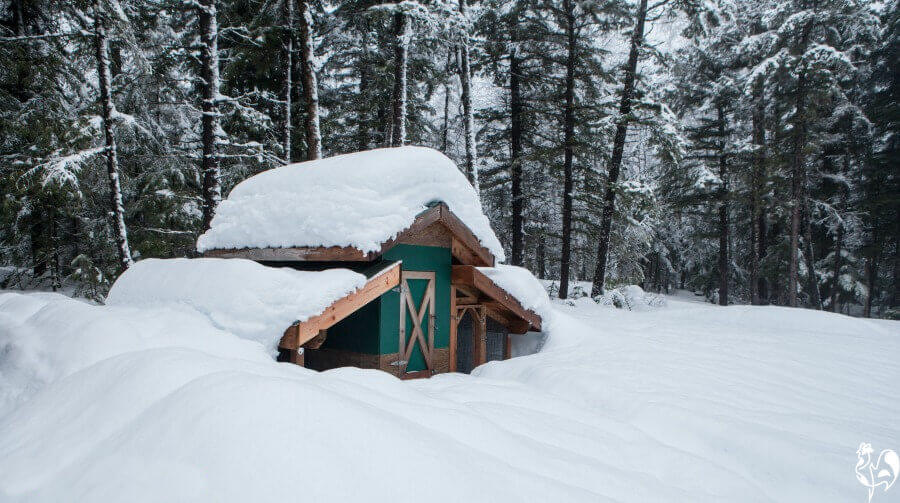 Winter-proofing your coop is a must to help prevent frostbite in your flock.
Winter-proofing your coop is a must to help prevent frostbite in your flock.- Proper ventilation will help, as will making sure your bedding is kept ultra-clean. I'm fortunate never to have had a case of frostbite in my flock, and I put that down to having small windows covered only with hardware cloth which allow ventilation but not drafts.
- If you use the deep litter method, make sure you maintain it properly. Wet droppings on straw is certain to create the worst possible environment. Turn the bedding regularly and, if you see it becoming moist or it begins to smell of ammonia, change it completely.
- Don't leave water in the coop overnight. Chickens need water during the day, but won't use it at night - and a spillage will add to the risk of frostbite.
- During the day, use a nipple watering system to reduce the risk of water spillage on wattles.
- Send your flock to the roost with a full crop. Food digestion helps keep body temperature raised during the night. Home made, high protein treats are particularly helpful at this time of year and can be made of items you're likely to have in stock.
- Finally, it should go without saying that young chicks cannot cope with cold weather. They need to be kept in a warm area until they're not just feathered, but have enough body weight to give them some protection.
If you found this article helpful, you may like these.
Sources and further reading.
A lot of "facts" you'll find on the internet are often people's individual views, based on inaccurate information repeated from poor quality sources.
The information I provide in this article and others is based not just on my own experience, but on evidenced facts from scientific, peer-reviewed research and books from highly respected and experienced poultry keepers such as Gail Damerow.
Some of the trusted sources I have used in this article are these.
Gounaris, Dr. R., and Gounaris, Dr. S.: Case Story: Big Head's Frostbitten Comb. Pub. Poultry DVM, 2019.
- Home
- Winter care
- Frostbite

